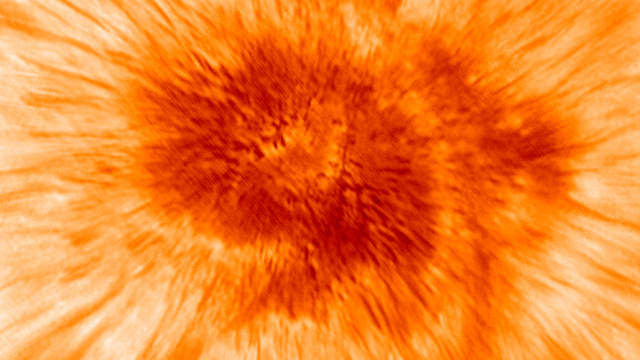A series of new images captured by researchers provide the first-ever detailed view of the dark central patches of sunspots — revealing with more detail than ever how they work.
The images of the sun’s umbrae — the formal name for the dark patches at the centre of sunspots — were captured by scientists using the Big Bear Solar Observatory (BBSO). They’re not the first detailed sunspot images captured by that telescope, but they do reveal the physical conditions that give rise to the plumes of plasma that are ejected from the umbrae, seen as bright dots emerging from their dark hearts. Vasyl Yurchyshyn, one of the researchers working on the project, explains:
“We would describe these plasma flows as oscillating cool jets piercing the hot atmosphere. Until now, we didn’t know they existed. While we have known for a long time that sunspots oscillate — moderate resolution telescopes show us dark shadows, or penumbral waves, moving across the umbra toward the edge of a sunspot — we can now begin to understand the underlying dynamics.”
The resulting jets — known as spikes — can be as wide as 100km. They’re a result of magnetic and plasma waves penetrating through from the photosphere (the part of the sun that emits light) into its chromosphere. It’s thought that the spikes could contribute to the heating that causes coronal loops, those beautiful arcs that are spat out from the surface of the sun and then rejoin its surface. [NJIT]
